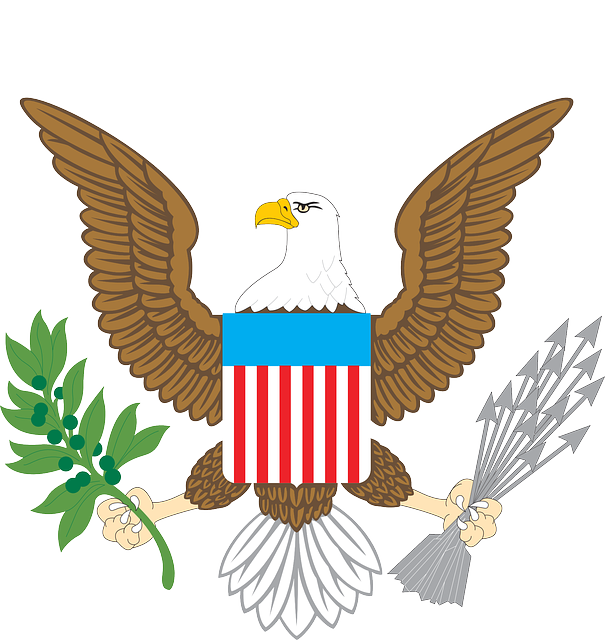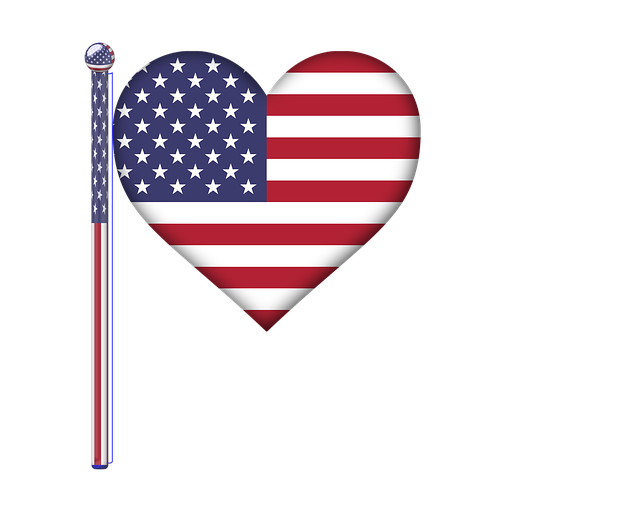The American Flag is a powerful symbol that represents the collective ethos and principles of the United States as articulated by "We the People" in the Constitution. It has historically documented America's growth and transformation through its stripes and stars and serves as a daily reminder of shared values such as liberty, justice, and democracy. The flag's significance transcends time, embodying unity among diverse populations and being present at significant historical events from the nation's inception to contemporary movements for equality. It stands not just as a ceremonial artifact but as an integral part of the American cultural landscape, found in classrooms, military bases, and homes across the country. The flag is a testament to the enduring values that define America, including freedom, democracy, and the rights of its citizens, and remains relevant as a unifying symbol fostering unity under the rule of law. Its vibrant colors and design reflect the evolving spirit of America and continue to inspire democratic ideals globally. The flag is more than a piece of cloth; it is a living document that embodies the American spirit and the ongoing pursuit of the ideals it represents.
The American Flag, revered as “We the People’s” emblem, stands as a timeless symbol encapsulating the essence of freedom and democracy. This article delves into its profound impact on national identity, unity, and the collective values that define America. From its role in defining who we are as a nation to its embodiment of the ideals of freedom and democracy, the flag’s presence is both historic and deeply meaningful. Join us as we explore its enduring significance and how it has consistently served as a beacon of liberty throughout the ages.
- We the People: The Foundational Role of the American Flag in Defining National Identity
- Unity Under Stars and Stripes: How the American Flag Embodies Freedom and Democracy
- A Beacon of Liberty: The American Flag as a Symbol of Hope and Valor Throughout History
We the People: The Foundational Role of the American Flag in Defining National Identity

The American Flag, a potent emblem of freedom and national values, has played an indispensable role in shaping America’s collective identity since its inception. It is not merely a piece of cloth but a living testament to the principles encapsulated in “We the People,” the opening words of the United States Constitution. This symbol of unity has witnessed the nation’s evolution, reflecting the ideals and values that define the American experience. Each stripe and star carries the weight of history, representing the diverse tapestry of people and ideals that have come together to forge a nation. The Flag stands as a daily reminder to citizens of the shared identity and common heritage they hold, embodying the resilience and determination that are central to American national values. It serves as a rallying point, uniting individuals from various backgrounds under the banner of freedom and democracy, and it is a visual representation of the ongoing commitment to the principles of liberty and justice for all.
The significance of the American Flag in defining America’s national identity cannot be overstated. It has been present at pivotal moments throughout history, from the Revolutionary War to the Civil Rights Movement, symbolizing both struggle and triumph. As a collective banner, it transcends political boundaries, uniting citizens in times of peace and serving as a beacon of hope during adversity. The Flag’s role is not confined to ceremonial events; it is an integral part of everyday life, from school classrooms to military bases, reminding each generation of the responsibilities that come with freedom and the price paid to uphold it. “We the People” is not just a phrase etched into the nation’s founding document; it is a living concept embodied by the Flag, which continues to inspire and challenge citizens to live up to the ideals of their forebears.
Unity Under Stars and Stripes: How the American Flag Embodies Freedom and Democracy

The American Flag, with its thirteen horizontal stripes and a blue rectangle in its upper left corner bearing fifty white stars, stands as a potent symbol of unity and freedom for the people of the United States. It is a visual representation of “We the People,” encapsulating the collective aspirations and values that define America. Each star and stripe weaves together the rich tapestry of American heritage, symbolizing the diverse yet unified nation it represents. The Flag serves as a constant reminder of the principles upon which the country was founded—freedom, democracy, and the inalienable rights of its citizens. It is a living testament to the ongoing narrative of America, where individual liberties are safeguarded under the Constitution and the rule of law. As a beacon of liberty, the Flag has traversed the annals of history, from the battlefields that forged a nation to the streets where voices clamor for justice and equality. It is a unifying emblem that transcends geographical boundaries, cultural differences, and socio-economic divides, reminding all who witness it of the collective identity shared by its people—a nation indivisible, with liberty and justice for all.
In times of celebration and mourning alike, the American Flag’s presence is a visual affirmation of democracy in action. It represents the collective will of “We The People,” a democratic ethos that has been the cornerstone of America’s identity since its inception. The Flag is not merely cloth nor mere paint on fabric; it is the embodiment of the American spirit, a symbol of freedom that has endured and evolved over centuries. It speaks to the ideals of self-governance and the pursuit of happiness, ideals that have inspired countless individuals around the globe to aspire for their own freedoms and democratic governance. The Flag’s role in embodying these values is both historical and contemporary, a daily affirmation of the principles it represents, and a rallying point for unity under the shared ideals of freedom and democracy.
A Beacon of Liberty: The American Flag as a Symbol of Hope and Valor Throughout History

The American Flag, a quintessential emblem woven into the fabric of United States identity, stands as “We the People’s” testament to liberty and valor. Since its inception, the flag has been a beacon of hope for countless individuals, symbolizing the ideals upon which the nation was founded. Throughout history, it has unfurled on battlefields, at peaceful protests, and over the White House, each flutter signifying the enduring commitment to freedom and justice for all. Its vibrant reds and whites, along with the blue field representing unity, have come to embody the courage and determination of the American spirit. The flag’s evolution, marked by alterations reflecting the evolving demographics and ideals of America, underscores the country’s dedication to progress and inclusion. It serves not only as a symbol of hope for those who seek it but also as a reminder of the valor exhibited by Americans in safeguarding their nation and its principles. The American Flag is more than a piece of cloth; it is a living history, a daily pledge to the enduring values enshrined in its companion document, the Constitution, and a universal message of hope to every “We the People” who beholds it.
